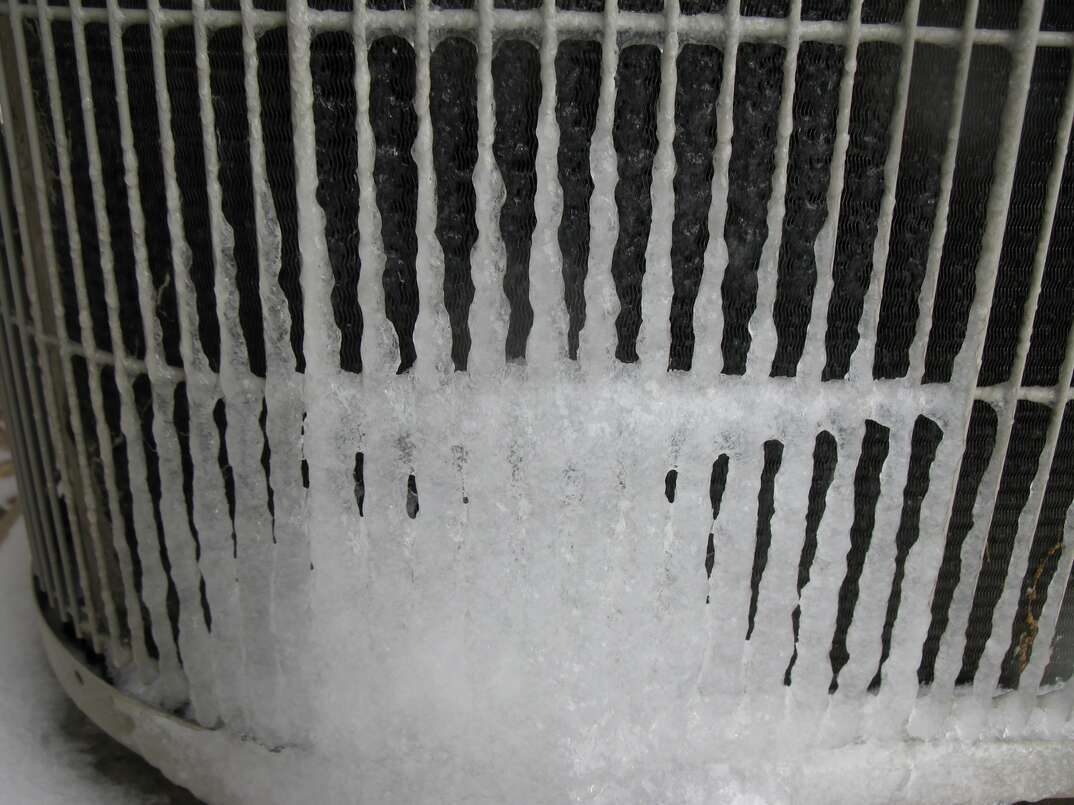Dealing With a Frozen AC Pipe - Advice for Resolving the Issue
Dealing With a Frozen AC Pipe - Advice for Resolving the Issue
Blog Article
We have stumbled upon this post involving What Causes AC Pipes To Freeze? below on the net and decided it made good sense to discuss it with you in this article.

Intro
Uncovering that your air conditioning pipeline is frozen can be concerning, especially during hot summer season when you count on your air conditioner one of the most. Understanding what to do in such a circumstance is essential to prevent further damage to your cooling system and guarantee your comfort indoors.
Understanding the Causes
A number of factors can contribute to the cold of an air conditioner pipeline. Recognizing these causes can help you attend to the concern successfully.
Absence of Airflow
One common source of an icy a/c pipeline is inadequate airflow. When the air flow over the evaporator coil is restricted, it can create the coil to go down below freezing temperature, leading to ice formation on the pipe.
Reduced Refrigerant Levels
Inadequate cooling agent levels in your air conditioner system can also result in an icy pipe. Low refrigerant levels can cause the stress in the system to go down, leading to the cold of moisture on the evaporator coil.
Cold Weather Conditions
In chillier environments, freezing temperatures outside can add to the freezing of air conditioner pipes. If your air conditioning device is not correctly protected or if there are leaks in the ductwork, chilly air can infiltrate the system, creating the pipeline to ice up.
Dirty Air Filters
Unclean or stopped up air filters can restrict airflow in your air conditioning system, resulting in various issues, consisting of a frozen pipe. It's necessary to change or cleanse your air filterings system routinely to make certain appropriate air flow and prevent ice build-up.
Signs of a Frozen Air Conditioner Pipe
Acknowledging the indicators of a frozen a/c pipeline is critical for timely activity.
Minimized Airflow
If you notice a substantial decrease in airflow from your vents, it can indicate an icy pipeline.
Ice Buildup on the Pipe
Noticeable ice accumulation on the refrigerant line or the evaporator coil is a clear sign of a frozen a/c pipe.
Strange Sounds from the Unit
Uncommon sounds, such as hissing or gurgling, originating from your air conditioning unit can signal that there's ice existing on the pipe.
Immediate Actions to Take
When confronted with an icy AC pipe, it's vital to act swiftly to prevent more damages to your air conditioning system.
Turning off the a/c
The first step is to shut off your air conditioning system to prevent the system from running and exacerbating the issue.
Looking for Blockages
Check the area around the interior device for any kind of obstructions that might be obstructing air movement, such as furniture or drapes.
Defrosting the Pipe
You can make use of gentle methods like putting towels soaked in warm water around the frozen pipe to help thaw it gradually.
Safety nets
Taking preventive measures can help prevent future events of an icy air conditioning pipeline.
When DIY Methods Fail
If your efforts to thaw the pipeline or address other issues are not successful, it's time to employ a specialist.
Relevance of Hiring a Professional HVAC Technician
A qualified HVAC service technician has the competence and devices necessary to detect and repair problems with your air conditioning system safely and effectively.
Regular Maintenance Checks
Set up normal upkeep talk to a professional HVAC specialist to make certain that your air conditioner system is running effectively.
Altering Air Filters
Consistently replace or clean your air filters to stop air flow restrictions and keep ideal efficiency.
Insulating Exposed Pipes
If your air conditioner pipelines are exposed to chilly temperatures, think about protecting them to prevent cold throughout winter months.
Seeking Professional Help
If DIY approaches fall short to settle the problem or if you're uncertain regarding exactly how to proceed, it's best to seek aid from a certified HVAC technician.
Final thought
Taking care of a frozen AC pipe can be a frustrating experience, but recognizing just how to respond can assist lessen damage and bring back comfort to your home. By understanding the reasons, acknowledging the indicators, and taking punctual activity, you can successfully address the problem and stop future incidents.
What to Do If Your AC Line Is Frozen
Make Sure All Supply and Return Air Vents Are Open
If you notice problems with airflow, the first thing you should do is check your supply and return vents. Supply vents distribute clean, conditioned air throughout your home. As this air becomes stale, it’s pulled into the return vent, where it’s reconditioned before being sent back out through the supply vent.
When these vents are closed, air won’t flow in the home. Before examining your AC, check the vents in every room and ensure they’re all open.
Check for a Dirty Air Filter
Another possible cause of limited airflow is a dirty air filter. Your air conditioner’s filters catch elements you don’t want to breathe in, such as dirt and dust. Over time, filters can become clogged, ultimately blocking air from flowing in and out. The lack of airflow can then cause the entire coil to freeze and will completely restrict any air from moving through it. The AC may need to be powered off for one to two days to allow the coil to thaw after replacing the filter to allow proper functioning of the unit. This debris can also accumulate on your AC’s evaporator coil, requiring a more serious repair. In general, air filters should be cleaned regularly (about every two weeks).
Assess Your Outdoor Unit
In addition to checking your AC, assessing the outdoor unit is a good idea. Also known as the condensing unit, it works with your interior unit to release heat outside. An issue with the outdoor unit can result in rising internal temperatures.
Overgrown Shrubs or Clogged Leaves
From leaves and twigs to shrubs and debris, there’s no shortage of outdoor elements that can accumulate around your condensing unit. When these elements get lodged inside the unit, they can block airflow. Fortunately, removing the blockage can solve the problem.
Sounds of a Broken Fan
Shrubs and leaves aren’t the only things that can impede your outdoor unit’s airflow. If the fan is broken, the unit won’t be able to properly get rid of heat — which means the internal temperature won’t go down. First, make sure the fan is spinning. If it is, check for the following sounds of a broken fan:
Buzzing Rattling Screeching Hissing Clicking Preventative Measures
Nobody wants to deal with a frozen AC line. In addition to causing problems with your air conditioner, they require professional repairs. On the bright side, there are preventative measures you can take to help ensure this issue doesn’t arise in the first place.
https://www.coopergreenteam.com/blog/what-to-do-if-ac-line-frozen

Hopefully you liked our part about Have a Frozen AC Line? Here’s How to Fix It. Thank you for taking time to read our posting. Appreciated our post? Please share it. Let someone else discover it. Thanks for your time. Come back soon.
Call Today Report this page